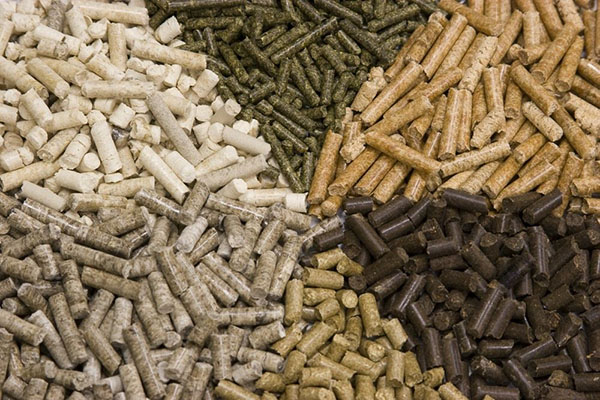The rising cost to feed animals is squeezing meat producers

The meat industry is starting to get squeezed from both sides.
China is rebuilding its hog herd faster than expected, boosting demand and prices for soybeans and corn used to feed animals. And with its herds growing quickly, the world’s biggest consumer may soon need to import less meat.
That twin dynamic — elevated feed costs and likelihood of smaller meat shipments to China in 2021 — threaten to shrink profits for livestock and poultry farmers in the U.S, Brazil and elsewhere, as well as the companies that process the animals into meat. Even worse, producers are getting hit just as they begin emerging from the coronavirus pandemic that added costs and lowered domestic prices for animals.
“In the coming year, U.S. livestock and poultry producers will face more feed-cost inflation than they have in over a decade, challenging their ability to recover after a difficult and volatile 2020,” Will Sawyer, animal protein economist at farm lender CoBank ACB, said in a Dec. 10 report.
Sawyer expects American beef, pork and chicken producers to have 12% higher feed costs in 2021 than this year.

China is importing record amounts of grain and soy just as dry weather threatens to shrink South American crops and after harvests in countries such as Ukraine fell short. The tight supply is a reversal from a years-long glut in grain and oilseed markets that had helped livestock and poultry producers to expand.
Meanwhile, worries of diminishing meat exports to China in the coming months have started weighing on prices in the U.S., where demand from restaurants and institutions such as schools is still lower due to the virus.
Pan Chenjun, a senior livestock analyst with Rabobank, last week estimated pork imports in China could drop by 30% next year.
China’s pig production is recovering from the African swine fever outbreak that started decimating the herds beginning in 2018, and farms there are expanding and modernizing. Herd growth prior to the Covid-19 pandemic was “massive,” according to Hugh Welsh, president of Royal DSM NV in North America, which has a large animal-nutrition unit.
Because of this there’s a “greater demand for feed ingredients, it’s been an interesting development for us,” Welsh said by phone. “We’ve had a time when we had significant increases in demand on protein products.”
In Brazil, the world’s top exporter of chicken, feed costs have an additional push: the local currency devaluation. The weaker real has boosted the appeal for exports, drawing down soybean ending inventories to the lowest at least since 1999.
Drought is also hurting the summer corn crop in the southern part of the country, a poultry and pork production hub. The combination has pushed Brazilian meat prices to another level, according to Ricardo Santin, head of the meat exporter group ABPA.
“Production costs are passing through a structural change on rising feed costs and higher expenses related to the coronavirus pandemic, “Santin said in a press conference last week. Costs to raise birds rose 36% through October this year, while pork costs increased 41%, ABPA said, citing figures from Brazil’s state-owned agricultural research agency Embrapa.
China’s demand for Brazilian meat will remain high, especially for pork, Santin from ABPA said. China’s pork production won’t reach pre-African swine fever levels until 2025, and import demand might continue to climb on rising consumption, resulting in a deficit of 3 million tons of pork in five years, he said.
Brazil’s pork export growth will slow to 10% annually next year from 37% in 2020, according to ABPA. Chicken exports may rise as much as 3.6%, after a steady 2020, as economies recover in traditional buyers such as Middle Eastern countries and covid restrictions ease, the group said.
Meat companies spent over a $1 billion this year in costs tied to the Covid-19 pandemic, installing plastic dividers in slaughter plants, testing for the virus, distributing protective equipment and increasing worker pay, according to the lobbying group North American Meat Institute.

Poultry companies generally have some of the most direct exposure to animal-feed costs since they own the chickens they raise and then slaughter. Sanderson Farms Inc., the No. 3 biggest U.S. chicken producer, in October described higher feed costs as a headwind, and that it was running “hand to mouth” on feed. The company, which also raises the majority of its pigs, reports fourth-quarter earnings on Dec. 17.
Already, elevated corn- and soy-based feed account for an estimated 58% of costs for U.S. hog farmers, up from 55% a year ago, according to John Nalivka, president of Sterling Marketing Inc. Feed accounts for about 24% of costs for fattening cattle, up from 18% a year ago.
“This feed-cost situation is critical,” Nalivka said by phone. “It appears prices are going to remain relatively high.”
Read also
Wheat in Southern Brazil Impacted by Dry Weather and Frosts
Oilseed Industry. Leaders and Strategies in the Times of a Great Change
Black Sea & Danube Region: Oilseed and Vegoil Markets Within Ongoing Transfor...
Serbia. The drought will cause extremely high losses for farmers this year
2023/24 Safrinha Corn in Brazil 91% Harvested
Write to us
Our manager will contact you soon



